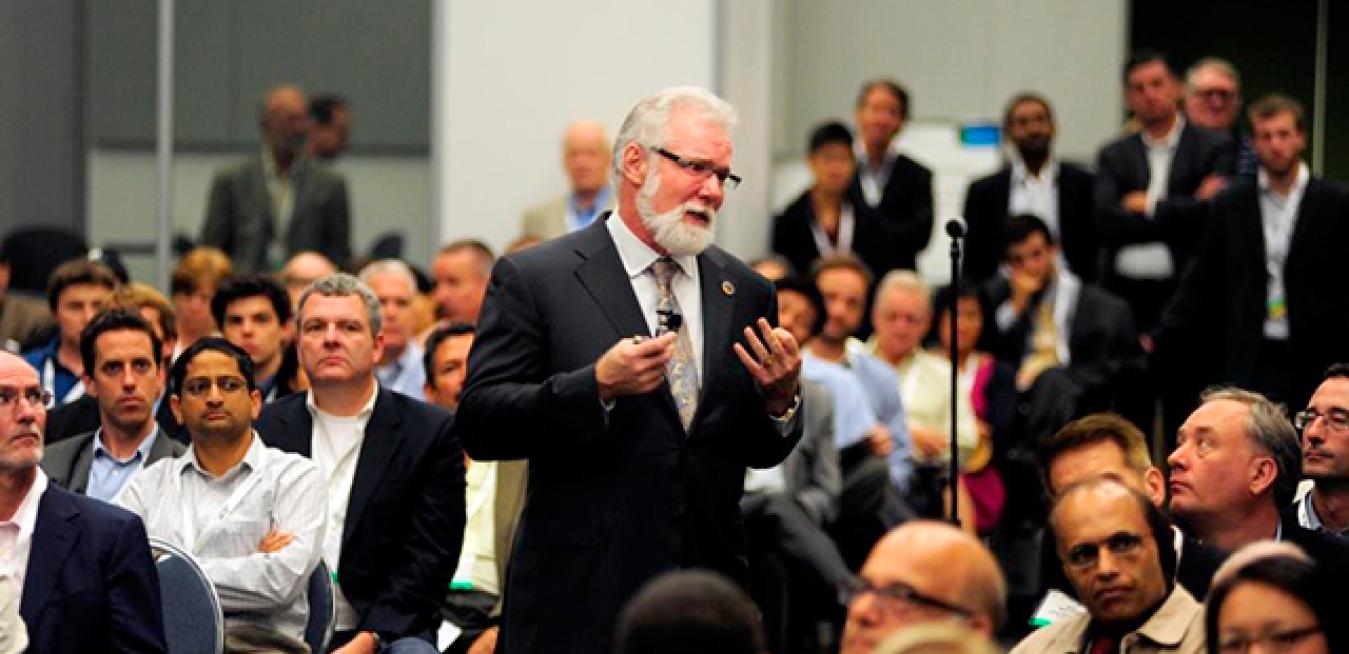“We really do have the ability now to solve most of the world’s energy [needs] without using fossil fuels, without increasing the carbon content on a planet that can no longer bear any more carbon in it,” Lancaster Mayor Rex Parris told an audience at the Energy Storage North America conference last fall. “We’re the alternative energy capital of the world, and we got there in four years.”
How exactly Lancaster, a city of 157,000, attained this distinction was through Parris’s determination to save the city money and jumpstart job creation – Lancaster’s unemployment rate was more than 15 percent last year – by becoming a leader in green energy production and storage.
While environmental consciousness and emission reductions are powerful motivators for these projects, “this is not a [city’s] traditional frame of thought,” said Heather Swan, senior projects coordinator for Lancaster Power Authority. Lancaster has one primary objective when it comes to creating its own energy – saving money.
“It’s very altruistic usually,” Swan said, “but we don’t have the money to do it, and we have to go out there and treat it like a business venture.”
One of the first city-wide renewable initiatives Lancaster took on was fitting five municipal buildings with solar shade structures in 2011, which saved the city more than $50,000 by the year’s end. The following year, Lancaster teamed up with the local school districts to install the same solar systems in 25 elementary schools. By the end of 2012, the schools saved $350,000 in energy costs.
“We operate with the goal of saving money, creating energy and creating revenue streams for the city,” Swan said. “We’ve been empowered by the mayor to get creative and think outside the box – how we can parlay renewable energy into our utility and what we do.”
For Mayor Parris, the major shifts in energy consumption and storage are best initiated on the city level. “I strongly suggest that wherever you come from, start focusing on the local government because [change] could happen quicker, then it becomes infectious,” he told the conference audience last fall. “We were the first city to require solar panels, and now I understand lots of cities are looking at it and have it before their council or attempting to do it.”
Lancaster, CA, Mayor R. Rex Parris delivers keynote address in September 2013 during the first Energy Storage conference in San Jose.
In December of last year the California Energy Commission (CEC) approved the city’s local standard requiring new single-family homes to provide an average of one kilowatt of solar-generated electricity.
“I’ve had the opportunity to visit the City of Lancaster and meet the Mayor and some of the senior City staff,” CEC Commissioner Karen Douglas said in a press statement. “I just want to say that they are taking some very impressive leadership in the area of clean energy, and I’m pleased to see them arrive at this point… I’m looking forward to continued leadership from the City of Lancaster and continued partnership moving forward.”
Today Lancaster generates 177 watts of solar powered electricity per capita. That compares with 38 watts per capita in San Diego and 61 watts per capita in San Jose.
While Lancaster has set its goals high in becoming the leader for renewable energy production in the country, it still has more obstacles to overcome. Today, Lancaster produces nearly a third of its energy through renewable means, but reaching 100 percent – a goal Parris wishes to achieve in two or three years – will require a series of strategic partnerships.
Ironically one of the biggest challenges Lancaster faces when it comes to a broader use of renewable energy is that the city doesn’t have enough capacity to transmit all that extra energy being generated, Swan said.
Because the amount of renewable energy Lancaster is producing continues to increase, the city has begun to search for innovative solutions to help transmit the power to the city. One of these solutions is a partnership with the city of Pittsburg in northern California to build a new transmission line in the Lancaster region to encourage additional solar use in the area.
“The learning curve has been huge,” said Swan, who, along with a large portion of her staff, comes from a business background – not an energy background. “But I’d say we’ve come out from behind the eight-ball and are doing very well.” She added that the city’s development of sustainable energy provides “a stable revenue stream to the city that allows us to maintain a stable financial base for those services to our citizens.”
Lancaster, CA: U.S. ‘Model City’ for Alternative Energy was originally published on Ideas Lab





